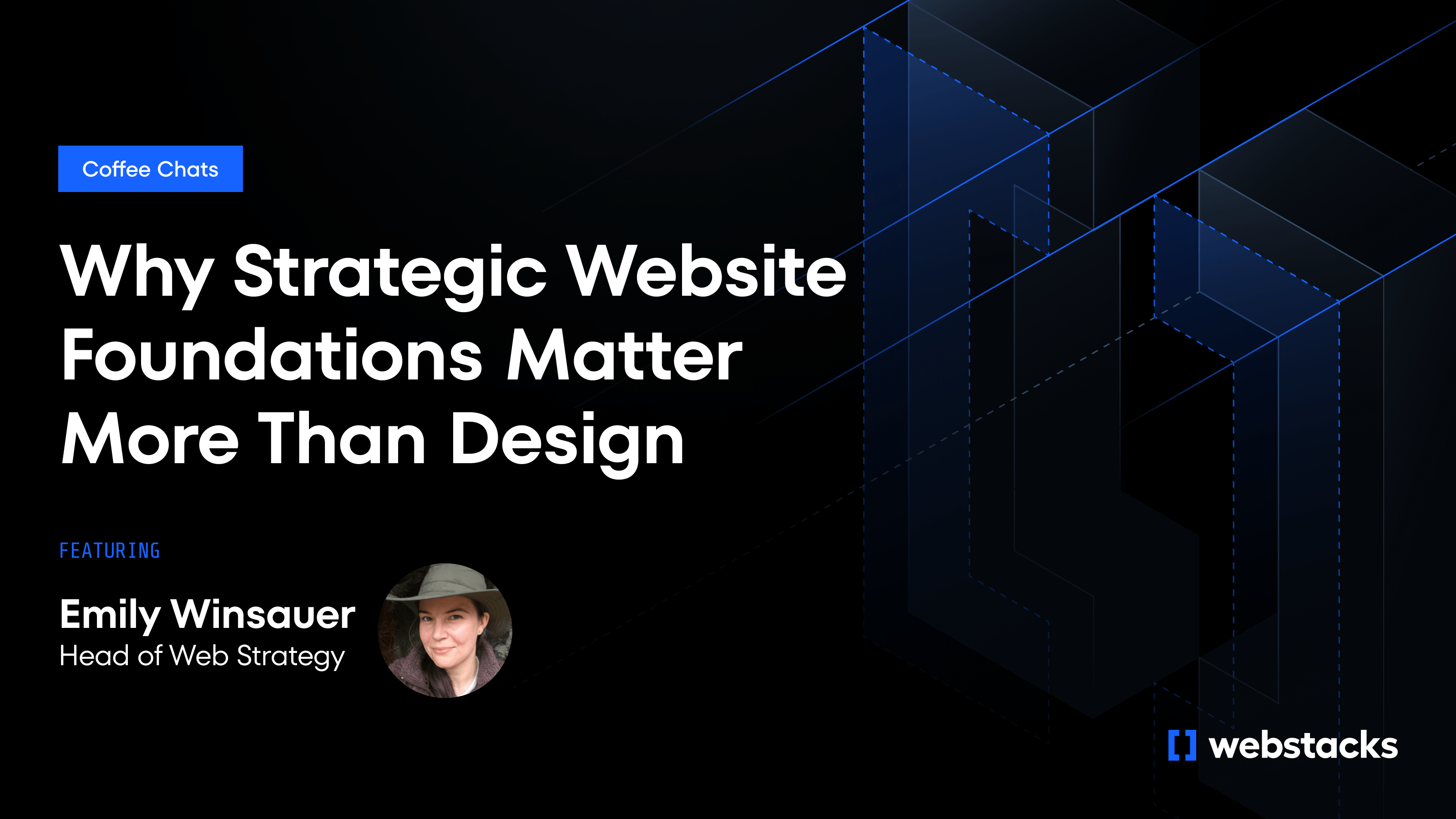AI is changing the way websites are built—but not in the way you think.
We’re not talking about auto-generating blog posts or writing alt text. The real shift is deeper. AI is giving web teams the ability to automate, generate, and personalize digital experiences in ways that weren’t possible before. But none of that is possible unless your content is programmable.
And most CMSs today? They’re not built for it.
If your site content lives in blobs of rich text or hardcoded components, AI can’t do anything with it. But when your content is structured—as modular, reusable entities connected by APIs—everything changes.
At Webstacks, we call this building with programmable content. And it’s what unlocks speed, scale, and AI-driven experiences across modern B2B websites.
What Is Programmable Content?
Programmable content is content that’s not just editable—it’s queryable, referenceable, and usable by code or AI.
Here’s what that looks like in practice:
- A Company object in your CMS that includes name, logo, industry, employee count, etc.—not just an image in a trust bar
- A reusable CTA component that references a central piece of content, rather than duplicating styles and copy across pages
- A form integration that dynamically pulls options from HubSpot or Salesforce instead of hardcoding them in a page builder
In other words, programmable content is:
- Defined by schema
- Exposed via API
- Referenced via relationships
- Usable in logic-driven workflows or AI models
It’s the foundation for building truly AI-native web experiences—and it’s only possible when your CMS is structured to support it.
Why AI Needs APIs—Not Interfaces
AI doesn’t drag and drop. It doesn’t click buttons or update text in a WYSIWYG editor.
AI interacts with web systems via APIs and structured data models. That’s why visual CMS platforms like Webflow or Builder.io hit a wall when it comes to AI integration—they weren’t built with this level of backend flexibility in mind.
Here’s how Webstacks CEO Nikan Shahidi put it:
“AI doesn’t use interfaces. It uses APIs, structured content, and clean schemas. Tools that are built for human interfaces—low-code tools—are at risk. The tools that enable AI to build are the future.”
That future requires content that isn’t just editable—it needs to be structured, modular, and machine-readable.
Real-World Examples: What Programmable Content Makes Possible
Let’s break down a few real use cases that illustrate the difference between “editable” and “programmable” content—and how that impacts AI workflows.
Creating Companies as Entities (Not Just Uploading Logos)
Instead of manually placing logos in a trust bar, we create Company objects—a structured content type in the CMS. Each includes fields like:
- Name
- Logo (with alt text)
- Industry
- Number of employees
- Client status (approved for public use or not)
These entities are referenced sitewide—on customer pages, use cases, trust bars, blog posts, and more. If a client logo changes or approval is revoked? Change it once, and it updates everywhere.
This makes personalization, filtering, and AI-driven page generation possible at scale. Want to generate a landing page for “Ecommerce customers with 500+ employees”? That’s now a simple query.
Flexible Form Logic, Controlled by the CMS
In a traditional CMS, embedding a HubSpot form with custom logic (e.g. redirect on submit) means cloning forms or hacking workflows.
In a structured system, you reference a HubSpot form ID inside a Form module, then define redirect behavior, success messages, and tracking scripts—all within the CMS UI.
This gives marketers control without needing to touch code or clone assets in HubSpot.
AI-Generated Pages Using Real Data Models
Imagine your marketing team wants to spin up 20 new vertical landing pages. With programmable content, you can prompt an LLM like GPT to:
- Pull in the correct components
- Populate them with real product and customer data
- Generate content variations based on vertical-specific benefits
Because your content is structured, the AI isn’t guessing—it’s assembling pages using real, linked data
What to Look for in an AI-Ready CMS
Not all CMSs are created equal. If you’re evaluating platforms for long-term flexibility and AI-readiness, here’s what matters most:
- Custom Schemas – Define your own content types and fields (e.g. Company, CTA, Testimonial)
- API-First Architecture – All content is queryable by devs and AI
- Relational Content – Reuse objects (e.g., companies, people) across your site
- Presentation Separation – Content and layout are decoupled for flexibility
- Developer + Marketer Friendly – Marketers can build pages; devs can extend the system
Platforms like Sanity are built this way from the ground up—making them ideal for B2B brands looking to scale fast and future-proof their web infrastructure.
Final Thoughts: Don’t Just Edit Content—Engineer It
AI isn’t here to replace your team. It’s here to accelerate what they’re already great at. But to unlock that acceleration, your content has to be structured, modular, and programmable.
If your website still lives inside a visual builder or legacy CMS, it’s not just harder to scale—it’s incompatible with the future of web.




